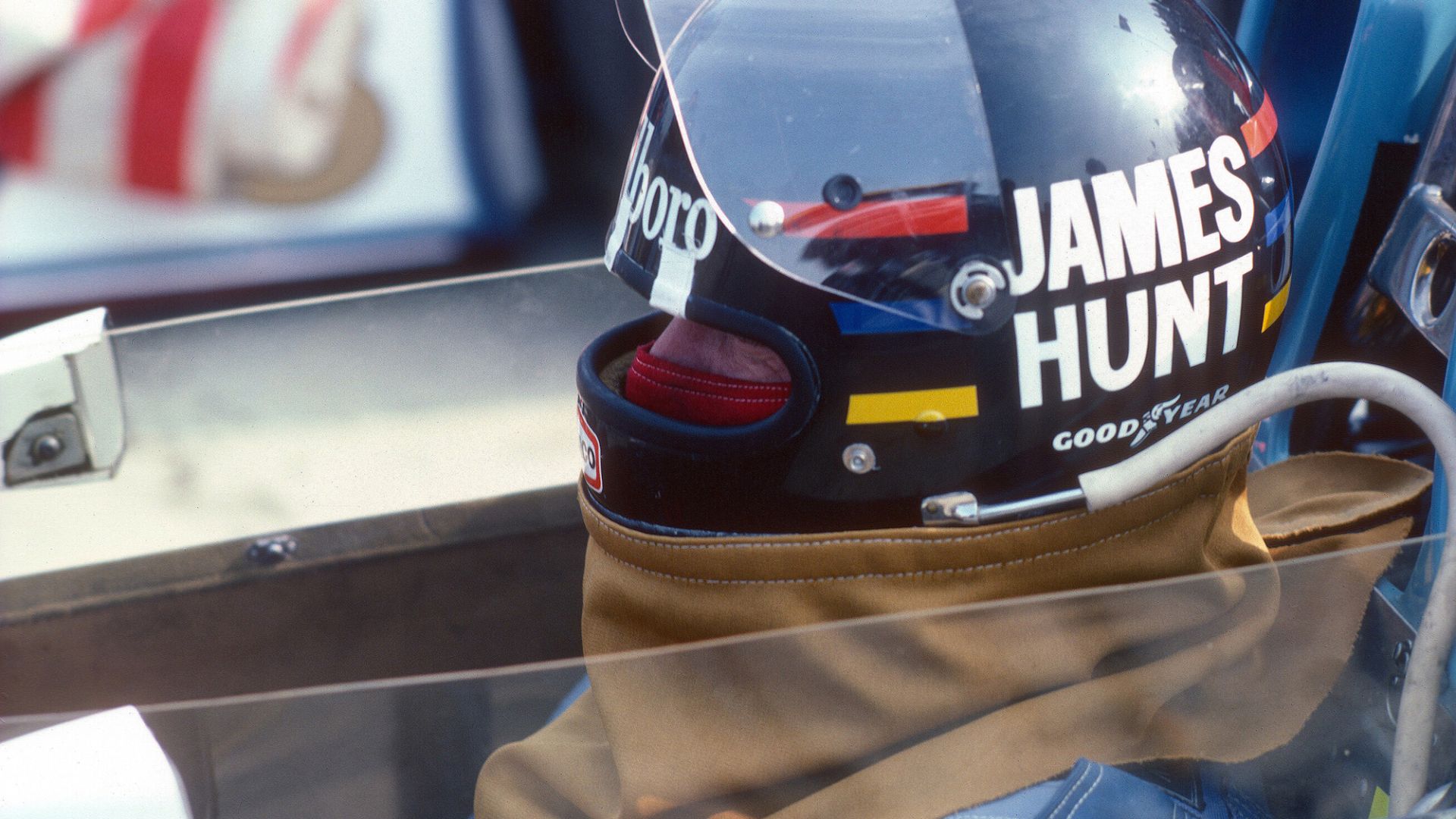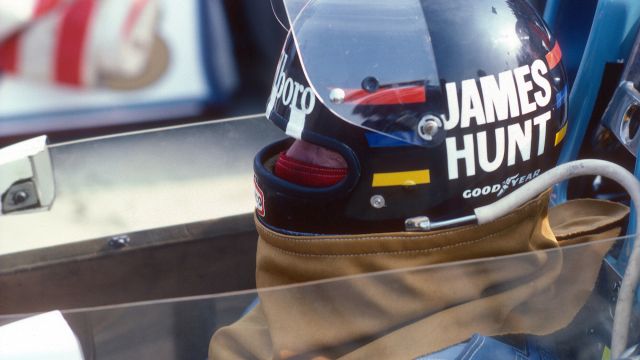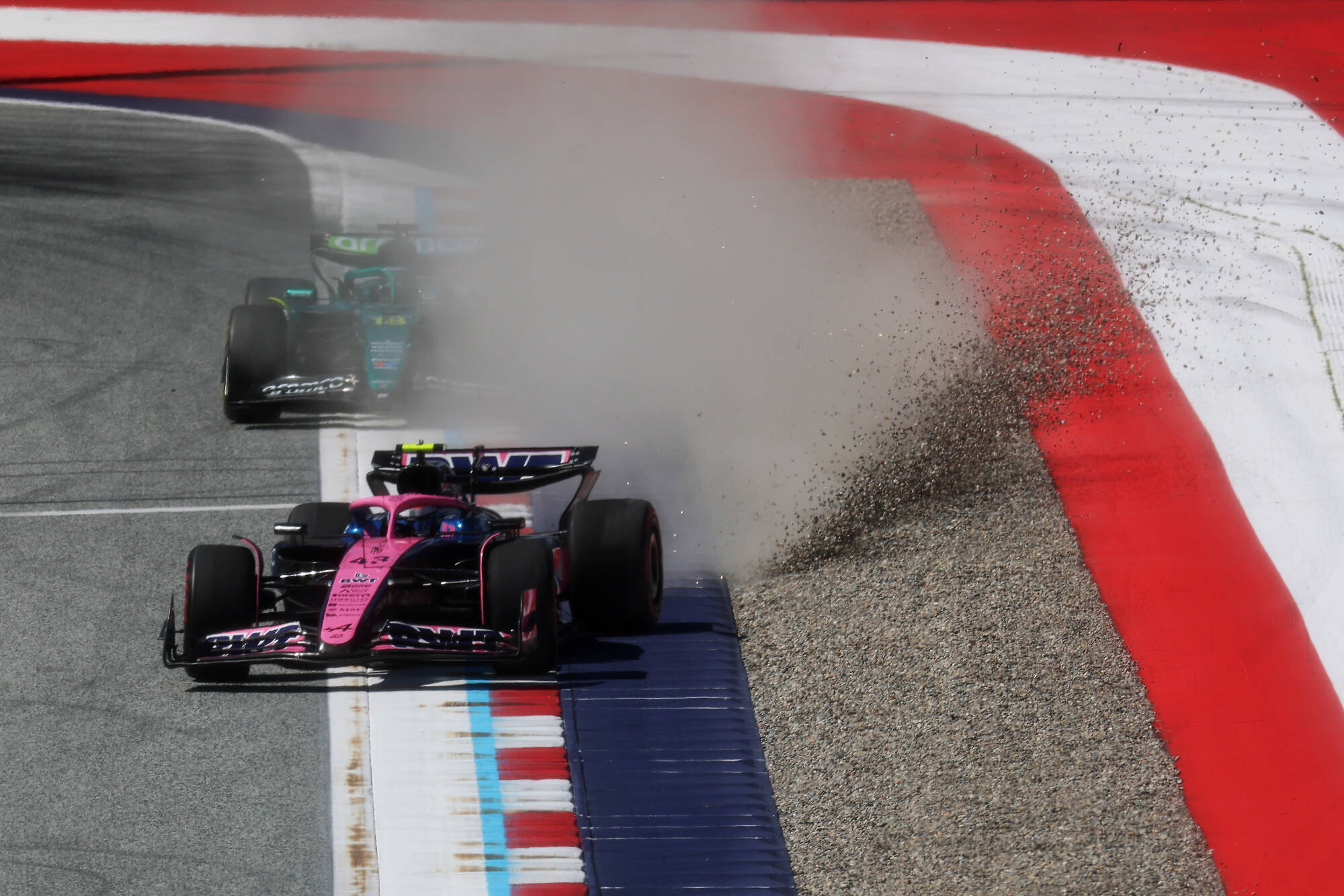Remembering James Hunt, 31 Years On


June 15th, 1993, marked a somber day for Formula One. James Hunt, the flamboyant British racing driver and 1976 World Champion, passed away at the age of 45. We delve into the life and legacy of a driver who embodied the raw spirit of Formula One, forever etching his name in motorsport history.
Hesketh Racing: A Baptism of Fire (1973-1975)
Hunt’s Formula One debut in 1973 with the Hesketh Racing Team was a baptism of fire. The car was notoriously unreliable, but Hunt’s raw talent shone through. Despite frequent retirements, he impressed with his daring maneuvers and fighting spirit, earning him the nickname “Hunt the Shunt” for his tendency to push the car beyond its limits.
The Marlboro McLaren Years: Glory and Controversy (1976-1978)
1975 marked a turning point in Hunt’s career. He joined the legendary Marlboro McLaren team, partnering with the Jochen Mass, and replacing Emerson Fittipaldi Hunt’s flamboyant personality clashed with Mass’ reserved demeanor, but on the track, they formed a formidable partnership.

The 1976 Championship: A Season for the Ages
The 1976 season was a rollercoaster ride for Formula One, and for Hunt in particular. He battled it out with the legendary Niki Lauda for the championship title. Lauda suffered a horrific crash at the German Grand Prix, putting his career on hold. Despite Lauda’s absence, Hunt continued to push himself to the limit, coming through a thrilling and controversial finale in Japan to secure the World Championship by a single point.
James Hunt’s Legacy Beyond the Championship
Hunt’s legacy extends far beyond his 1976 championship title. He was a rockstar of Formula One, captivating fans with his flamboyant personality and rock-and-roll lifestyle. He challenged the rigid traditions of the sport, bringing a sense of glamour and drama to the racing world.
Famous Moments: From Fuji to Brands Hatch
- The 1976 Japanese Grand Prix: On race day the weather was very wet with fog and running water at several places on the track. There were intense debates as to whether the race should be started; in the end the organisers decided to go ahead and a majority of drivers did not disagree. Some drivers, including Lauda, were not happy with the decision.Hunt took the lead from the start with Watson and Andretti behind. On the second lap Watson slid down an escape road and Lauda drove into the pits to withdraw, as he believed the weather conditions made the track too dangerous. Larry Perkins made a similar decision after one lap, as did Pace and Emerson Fittipaldi later in the race.Hunt continued to lead, behind him second place passed between Andretti and Brambilla. On lap 22 Brambilla challenged for the lead but spun out of contention before retiring 15 laps later with electrical problems. Jochen Mass moved into second before crashing on the 36th lap just before turn 7, promoting Patrick Depailler into the position with Andretti third.It seemed Hunt was on for an easy win, but as the track began to dry he started to lose positions. He only needed a fourth place finish to win the title, because of Lauda’s retirement. On lap 62 Hunt fell behind Depailler and Andretti, but two laps later Depailler’s left rear tyre started to deflate and he had to pit. Andretti took the lead, but then Hunt had a similar tyre problem. Hunt pitted, dropped to fifth and set off after Depailler, Alan Jones and Regazzoni. Depailler overtook both drivers on lap 70 and on the next lap Hunt did the same and overtook both of them in order to win the World Drivers’ Championship.
- The 1977 British Grand Prix: James Hunt had started from pole position with John Watson alongside him. But, Hunt did not get a good start due to clutch problems and dropped back to 4th as a result. This allowed Watson to take the lead into the first corner ahead of Niki Lauda’s Ferrari and Jody Scheckter’s Wolf. However, as the race had slowly progressed Hunt eventually managed to re-overtake Lauda and Scheckter and re-passed Watson for the race lead as the British drivers were running first and second. But the order of the top 2 did not stay the same as Watson started to slow when his fuel system failed on lap 53 and retired only 8 laps later. With Watson dropping out of contention this promoted Niki Lauda to second and Jody Scheckter to third. But Scheckter was also forced to retire later on when his engine failed on lap 60 which gave Mario Andretti in the leading Lotus third before his engine had also failed 3 laps later but was classified 14th. As Gunnar Nilsson in the remaining Lotus was given 3rd place and stayed there. James Hunt had finally managed to take his first win of the season for McLaren to the delight of the British fans, ahead of championship leader Niki Lauda, Gunnar Nilsson, Jochen Mass in the second McLaren
Life After Formula One: A Controversial Farewell
Finishing his Formula 1 career with a seven race stint at Olympus Cameras Wolf Racing. Hunt’s post-Formula One career was less successful. He struggled to find his place outside the racing world. His life took a tragic turn in 1993, leaving behind a legacy that continues to spark debate and admiration.
A Controversial Icon
James Hunt was a complex figure. He was a brilliant driver, a controversial personality, and a rockstar of Formula One. His legacy remains a topic of conversation, with some hailing him as a flawed genius and others criticizing his lifestyle choices. However, there’s no denying his impact on the sport. He brought excitement and drama to Formula One, reminding everyone that racing was not just about precision but also about passion and a willingness to take risks.
Hunt’s Influence on Modern Formula One
Hunt’s influence can be seen in the modern drivers who embrace individuality and a sense of showmanship. He paved the way for a new generation of drivers who are not afraid to express themselves both on and off the track.
The Final Lap: A Life Remembered
James Hunt’s life was a whirlwind of brilliance, controversy, and tragedy. 31 years after his passing, he remains a captivating figure in Formula One history. He was a champion, a rebel, and a reminder that racing is as much about the human spirit as it is about horsepower and speed. His legacy continues to inspire drivers and fans alike.
Hunt’s Statistics: A Champion’s Record
- Formula One World Champion (1976)
- 10 Grand Prix Victories
- 23 Podium Finishes
- 14 Pole Positions
- 8 Fastest Laps
Hunt’s Impact Beyond the Statistics
While the statistics tell a story of a successful driver, Hunt’s impact goes beyond mere numbers.
- Popularized Formula One: Hunt’s flamboyant personality and rock-and-roll lifestyle made Formula One more relatable and accessible to a wider audience.
- Embodied the Spirit of Risk-Taking: He never shied away from pushing the limits, both on and off the track, creating unforgettable moments of drama and excitement.
- Challenged the Status Quo: Hunt’s unconventional approach questioned the rigid traditions of Formula One, paving the way for a more open and exciting sport.
A Legacy for the Ages
James Hunt’s legacy is multifaceted. He was a champion driver, a controversial figure, and a symbol of a bygone era in Formula One. His story is a cautionary tale of brilliance and self-destruction, but it’s also a testament to the raw passion and unwavering spirit that can elevate a driver from champion to legend.
Thirty-one years after his passing, James Hunt’s memory continues to resonate. His story serves as a reminder that Formula One is not just about perfectly engineered machines and flawless driving. It’s about the human element, the drama, and the larger-than-life personalities who push themselves and their machines to the absolute limit. James Hunt, will forever be remembered as one such personality, a true legend of Formula One.






